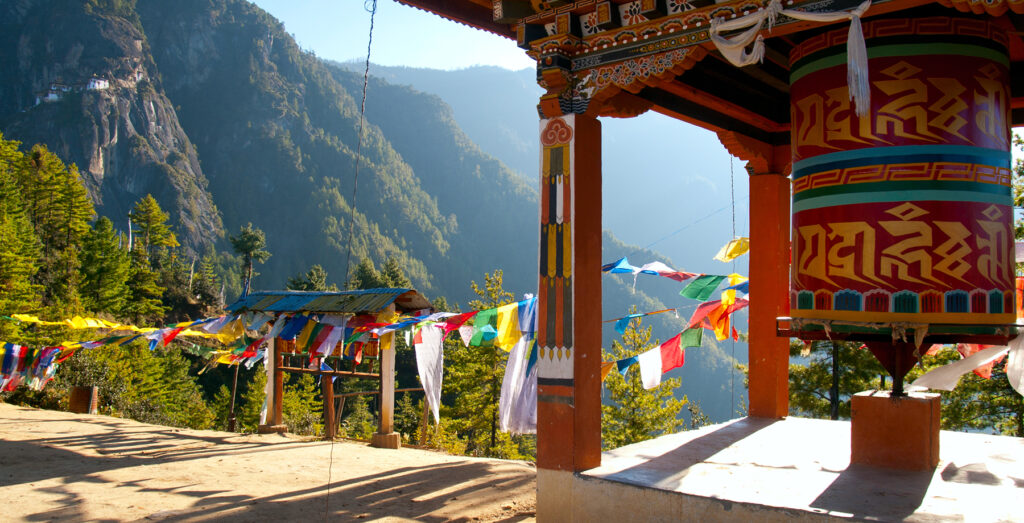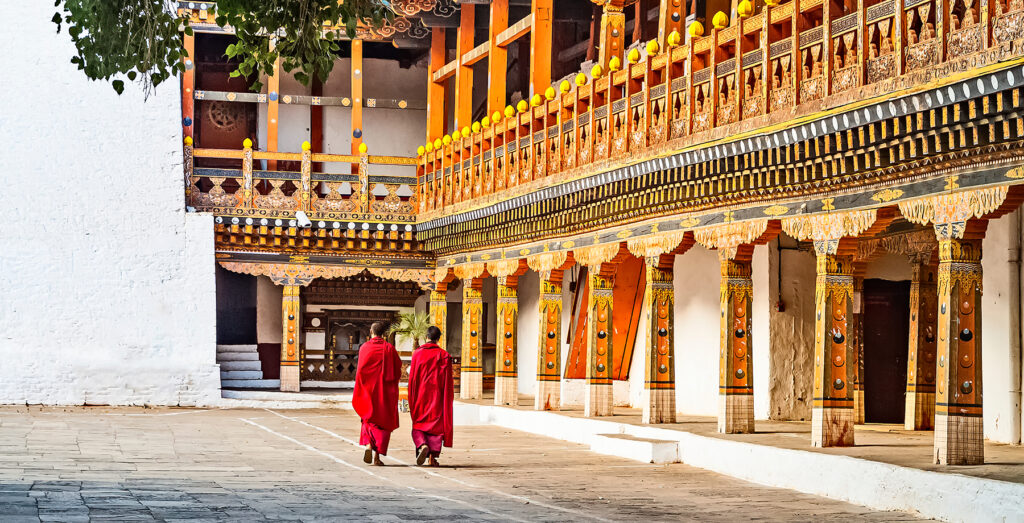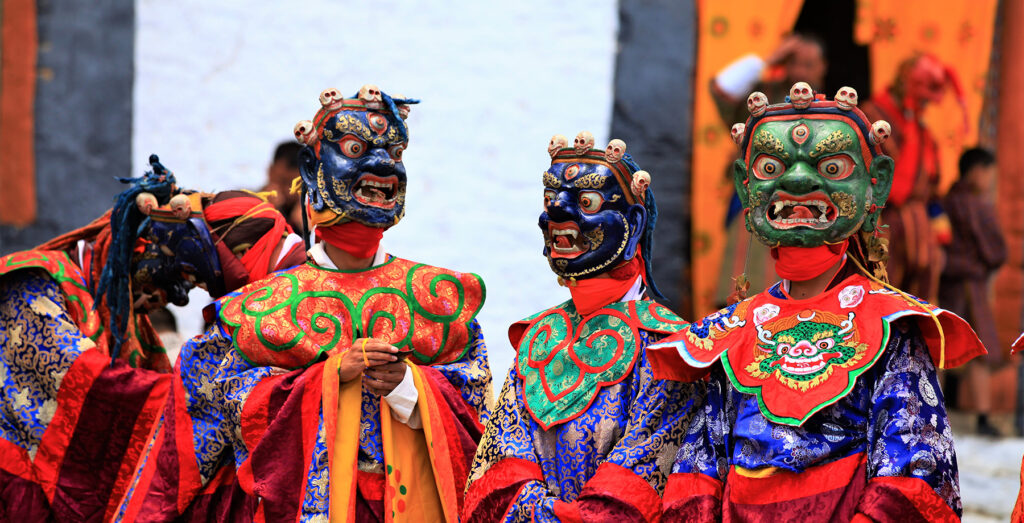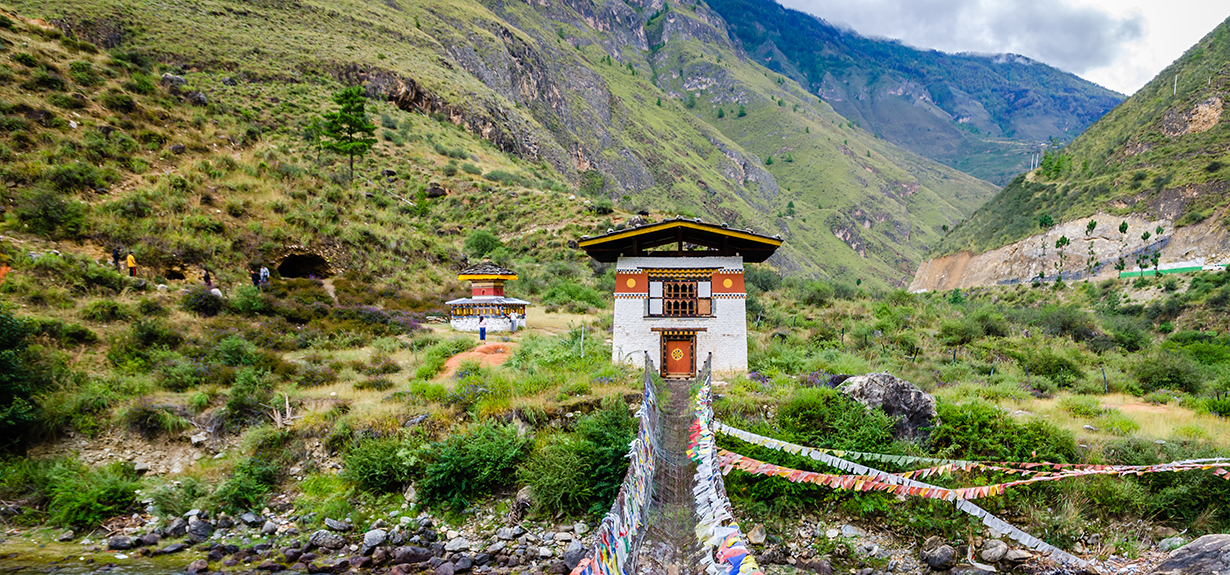Asia captivates the attention of Western travelers, particularly those who quest for learning journeys and spiritual understanding. When Americans travel to Asia, it is often a journey to discover cultural heritage.
Beyond the cliches of The Beatles visiting India and befriending the Hare Krishnas, there has long been a tradition of Westerners seeking answers from the East. For casual travelers, this curiosity and intrigue lead many of us into the temples of various Asian destinations, where we remove our shoes and snap a few photos. But how do we connect more meaningfully and respectfully to a spiritual culture and navigate cultural differences?
With this three-part series, I want to demystify spiritual explorations in Asia, especially for traveling families. We’ll cover some traditions and modern-day interpretations of spirituality and Eastern contemplative practices from Bhutan, Thailand, and Japan. I hope this serves as a practical guide for exploring spiritual culture meaningfully, inspiring you to experience how these practices may bring new insights into your own life.

Bhutan
Bhutan, or Druk Yul (meaning “The Land of the Thunder Dragon”), is a country known for its strong religious and spiritual traditions. Vajrayana Buddhism plays a crucial role in the lives of its citizens by serving as both a personal belief system and a guiding force in the development of Bhutanese society and administration.
Buddhist practices and beliefs can differ across different regions of Bhutan. Most Bhutanese adhere to the Drukpa lineage of the Kagyu school, with some following the Nyingma and Gelug schools of Tibetan Buddhism. Even though each school has its unique rituals, practices, and philosophical traditions, meditation is a crucial component of Bhutanese Buddhism. A minority of individuals continue to practice the older, pre-Buddhist animistic religious system known as Bon, which honors the veneration of nature, spirits, and ancestral deities. Usually, specially trained Bonpo priests perform Bon rites and practices.
These localized rituals in Bhutan are often intertwined with mainstream Buddhism. As each district has its own guardian deity and local deities, variations in rituals and practices create a unique blend of religious practices. These rituals highlight how syncretic Bhutanese spirituality is, integrating Buddhist teaching with regional traditions.
The monarchy has historically played a significant role in upholding and promoting Buddhism in Bhutan. The fourth king of Bhutan, Jigme Singye Wangchuck, affectionately known as K4, coined the term “Gross National Happiness” (GNH), which includes spiritual and cultural values as important indicators of national progress. Religious leaders are influential figures in society, and monastic institutions receive government support.
The spiritual practices of Bhutan are deeply interwoven into the daily lives of its people. Buddhism provides a framework for ethical living, promotes compassion and mindfulness, and offers guidance for navigating life’s challenges. The cultural significance of these spiritual beliefs and practices is evident in various aspects of Bhutanese life, including art, architecture, festivals, and social interactions.

Bhutanese people undertake a variety of Buddhist rituals, including meditation, prayer, and mantra recitation. It is said that by engaging in these behaviors, one might build up merit and create good karma. One of Bhutan’s most prominent spiritual practices is engagement with monastic life. Dzongs, or monasteries, are key centers for religious study, meditation, and prayer and are spread widely over the country. Monks and nuns play a significant role in upholding religious rituals and practices, as well as serving as teachers and guides for the community.
The celebration of religious festivals, or “tshechus,” is another important spiritual activity. Tshechus are spiritual gatherings that provide opportunities for people to connect with their religious traditions and experience spiritual renewal. They also serve as occasions for communal celebration, social bonding, cultural preservation, and religious observance.
Bhutanese society uses sacred art and symbols, like thangkas (religious paintings), sculptures, and intricate mandalas, as a means of spiritual expression and devotion. The act of making offerings and practicing generosity is highly valued in Bhutanese spirituality. Offering food, water, or other symbolic items to monks, monasteries, and temples is common practice. Such acts are believed to generate positive karma and contribute to one’s spiritual progress. Divination and astrology are also commonly used in Bhutanese spiritual practices to select auspicious dates and times for significant occasions. Astrologers are consulted, and divination is utilized to get information on private or public issues.

To fully immerse oneself in the spiritual traditions of Bhutan, engaging a knowledgeable guide will provide deeper insights into how Buddhism is ingrained in all aspects of Bhutanese society. Learning local cultural insights helps you navigate religious sites and practices and enhance your understanding and appreciation. Whether participating in prayer services, observing religious rituals, hiking to Taktsang Monastery (Tiger’s Nest), or visiting the sacred valley of Bumthang, these learning journeys allow you to connect with the spiritual essence of Bhutan.
One of my favorite ways to gain an understanding of Bhutanese spirituality is to stay overnight with a Bhutanese family through a homestay program. Interacting with the local community more intimately gives a deeper understanding of their daily spiritual practices beyond the temples.
As a socially responsible business, Elevate Destinations does not exoticize any of our destinations. Whether it is adventure travel or an educational experience, we aim for every journey to be insightful. And, as you travel on our learning journeys, you help support our Buy A Trip, Give A Trip program, which allows local youth to visit these important sites that are too often only accessible to tourists.


